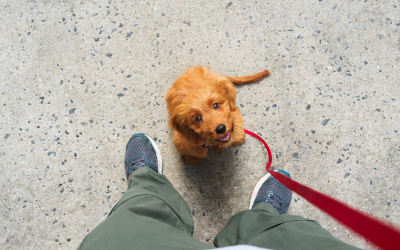Some Dogs Hump: Understanding and Managing Mounting Behavior
Some dogs hump. Young and old dogs, intact and altered dogs, male and female dogs. Most dogs do it at some point in their lives. It’s an entirely normal behavior that every dog has in their repertoire. It’s hardwired behavior that shows up now and then.
Why Do Dogs Hump?
Think of your dog as a computer with several programs installed: digging, chewing, barking, chasing things that run, etc. Sexual behavior (such as mounting) is there too. When a ball is thrown, the chase program is engaged: DOG:/>engage chase.run. But, during certain times, the humping program runs too.
Excessive Mounting Behavior
This post is for dogs who mount excessively, such as those who mount other dogs at the dog park until being told off, and those who mount or clasp humans during excitement.
Both humans and dogs engage in displacement behaviors when they experience big feelings such as joy, stress, excitement, annoyance, boredom, or sensory overload. Humans may tap their fingers, bite their nails, play a mobile game, stammer, fidget, or laugh nervously (and hopefully NOT hump.) Dogs may pace, scratch, bark, and zoom around. And they may hump, a physical behavior that gives the dog a sensory outlet for these big emotions.
Humping During Dog Play
Remember that mounting behavior is typically seen when dogs are in an excited/stressed state. We know that mounting is a behavior that often comes up when a dog feels anxious and doesn’t have the skills to navigate social situations. Social interactions can be stressful!
If your dog is playing with other dogs and becomes overwhelmed, they might stop, move away, sniff the ground, or exhibit other signs of stress. But if your dog is the humpy type, they may start humping another dog. It can be a problem when the humper is relentless, and the humpee has had enough.
Humping Isn’t About Dominance
In fact, it’s probably the opposite. Dominance is defined as “a relationship between individual animals that is established by force/aggression and submission, to determine who has priority access to multiple resources such as food, preferred resting spots, and mates.” (Bernstein 1981; Drews 1993).
In actuality, dogs don’t use mounting behavior to access food, toys, or space.
Humping Can Be About Sex
Puppies around six months of age are approaching sexual maturity. Humping shows up as an instinctual response influenced by raging adolescent hormones.
Consult with your vet about the potential benefits of neutering or spaying. This may not eliminate the behavior, but it can help reduce hormonal influences contributing to the excitement and, therefore, mounting behavior.
When Dogs Mount Humans
Just as with conspecific mounting, those big feelings are behind the behavior. Humping in this scenario is most likely to be stress-induced or overstimulation. Unknown visitors and children are common targets of humping because they may be stressful for a dog with limited exposure to them.
Mounting humans is obviously rude behavior and should be redirected. If you have a humpy dog, keep them leashed and managed in scenarios that will be difficult for them. Never punish a dog for humping; it will only stress them.
Dogs with a “Special Friend”
We understand that humping is often a symptom of arousal. Most often, that arousal is in the form of stress. Some dogs may turn to mounting a bed, stuffed toy, or a pillow to relieve that stress. As long as it relieves stress, letting your dog have occasional private time is okay.
Understanding Your Dog’s Mounting Behavior
Ultimately, we’re better served by understanding the cause of the humping rather than being embarrassed by it. Observe your dog before and after the behavior to understand the root cause of humping and when to manage it.
If you determine that your dog’s humping behavior is due to stress, use this information to make them more comfortable daily. That may be making introductions slower and easier, adding enrichment activities to their day, or avoiding situations that cause your dog a lot of stress, such as the dog park.
If the humping behavior persists or becomes a concern, it’s always a good idea to consult a professional dog trainer or your veterinarian.






